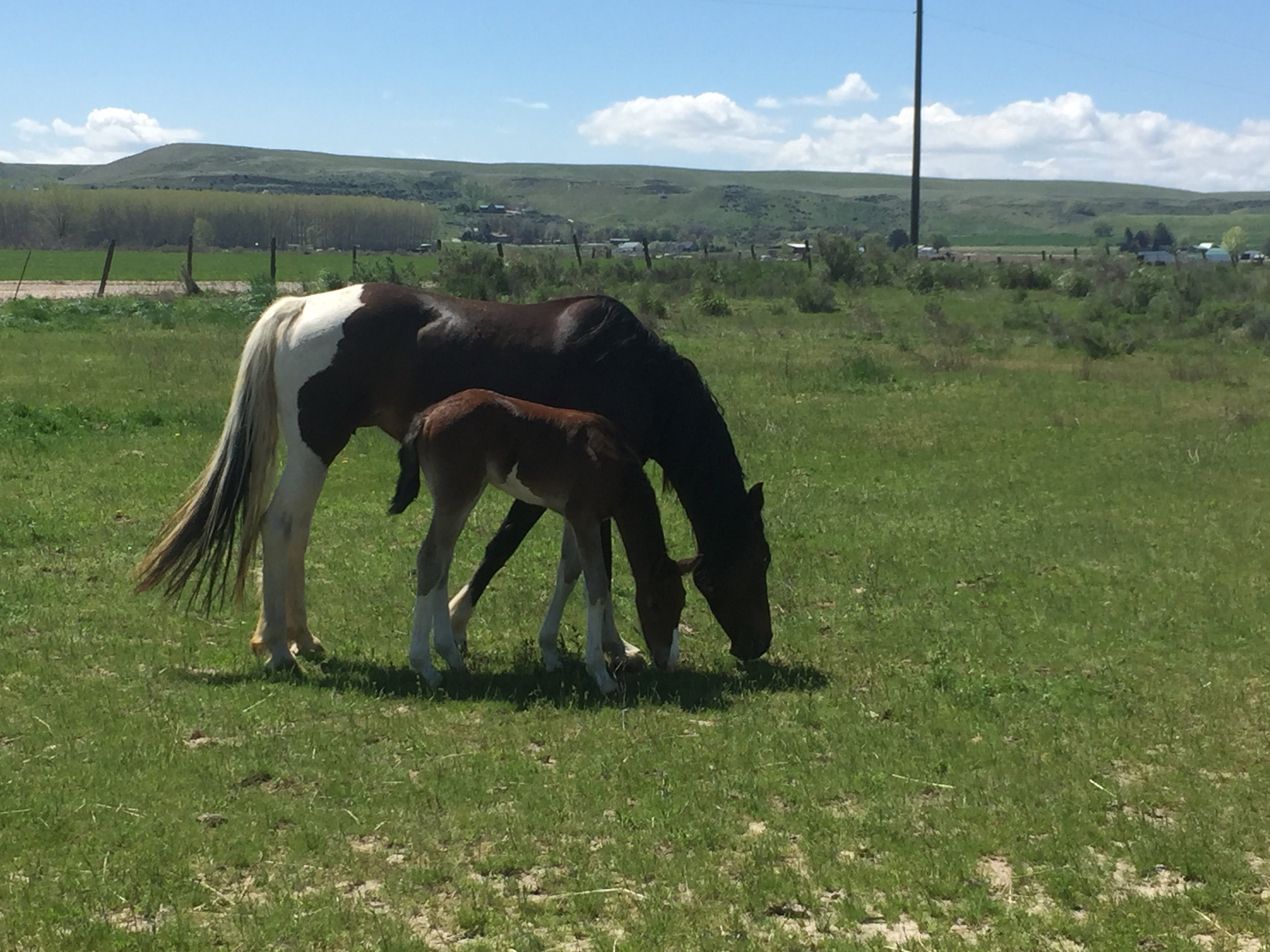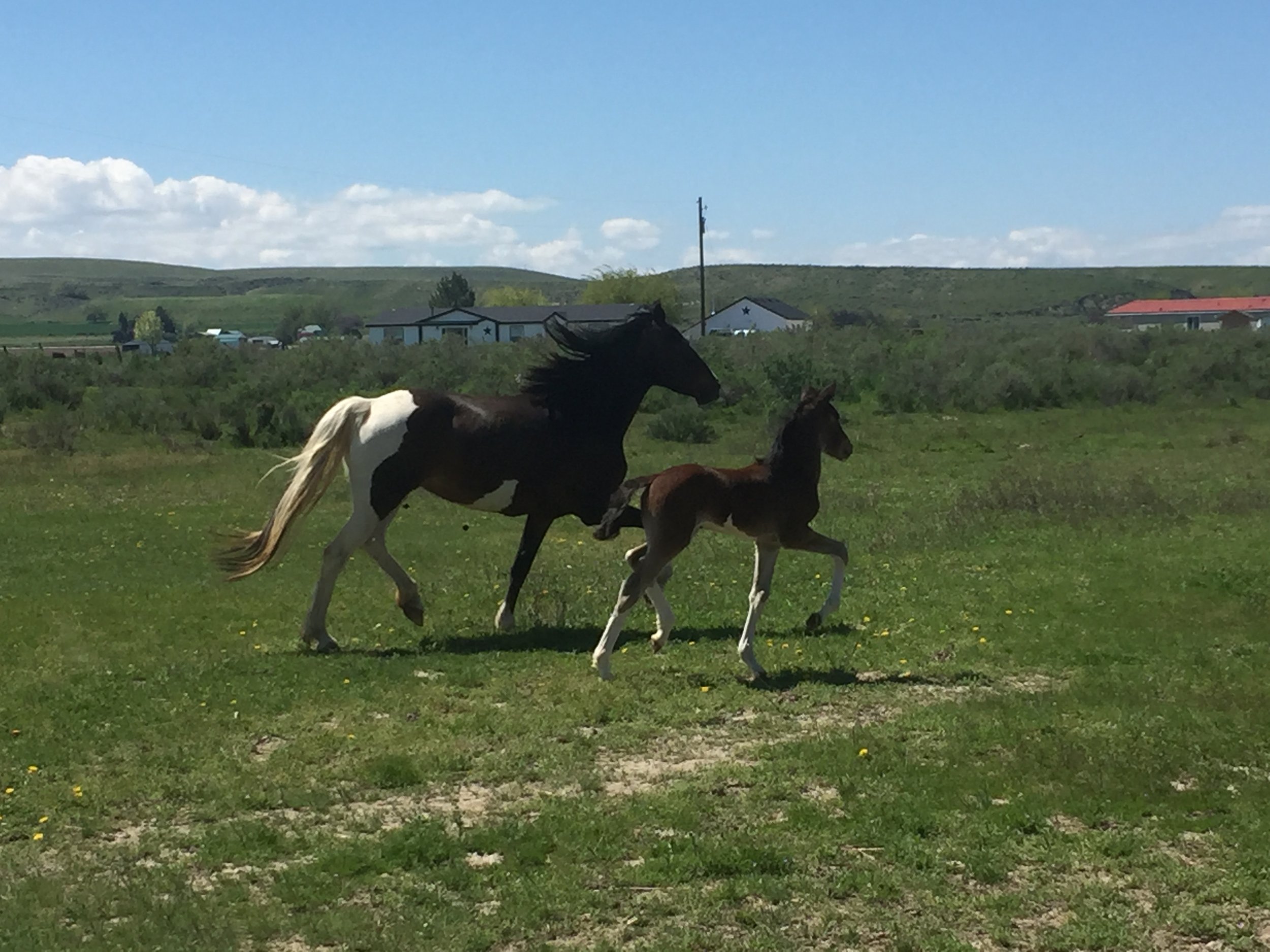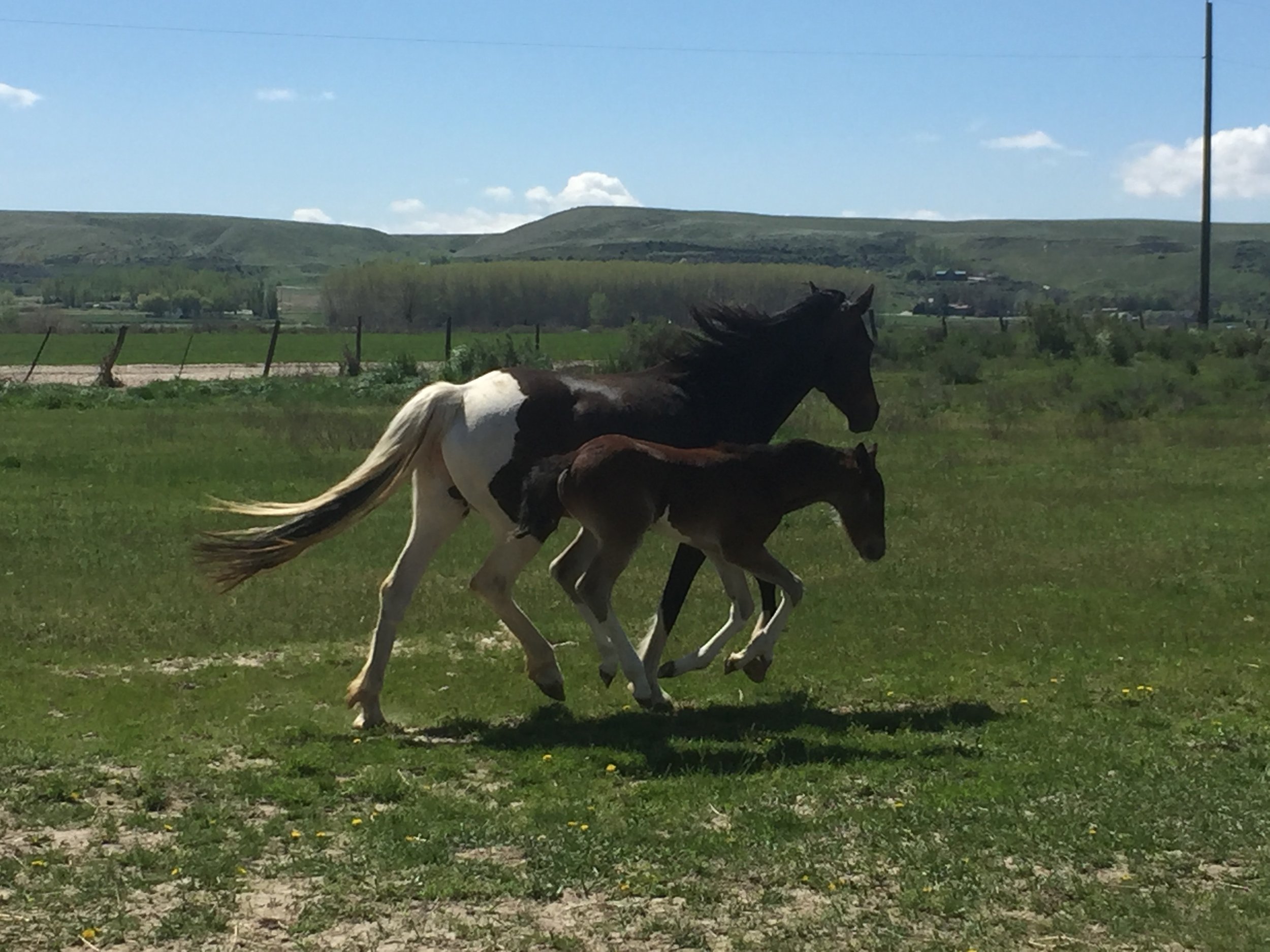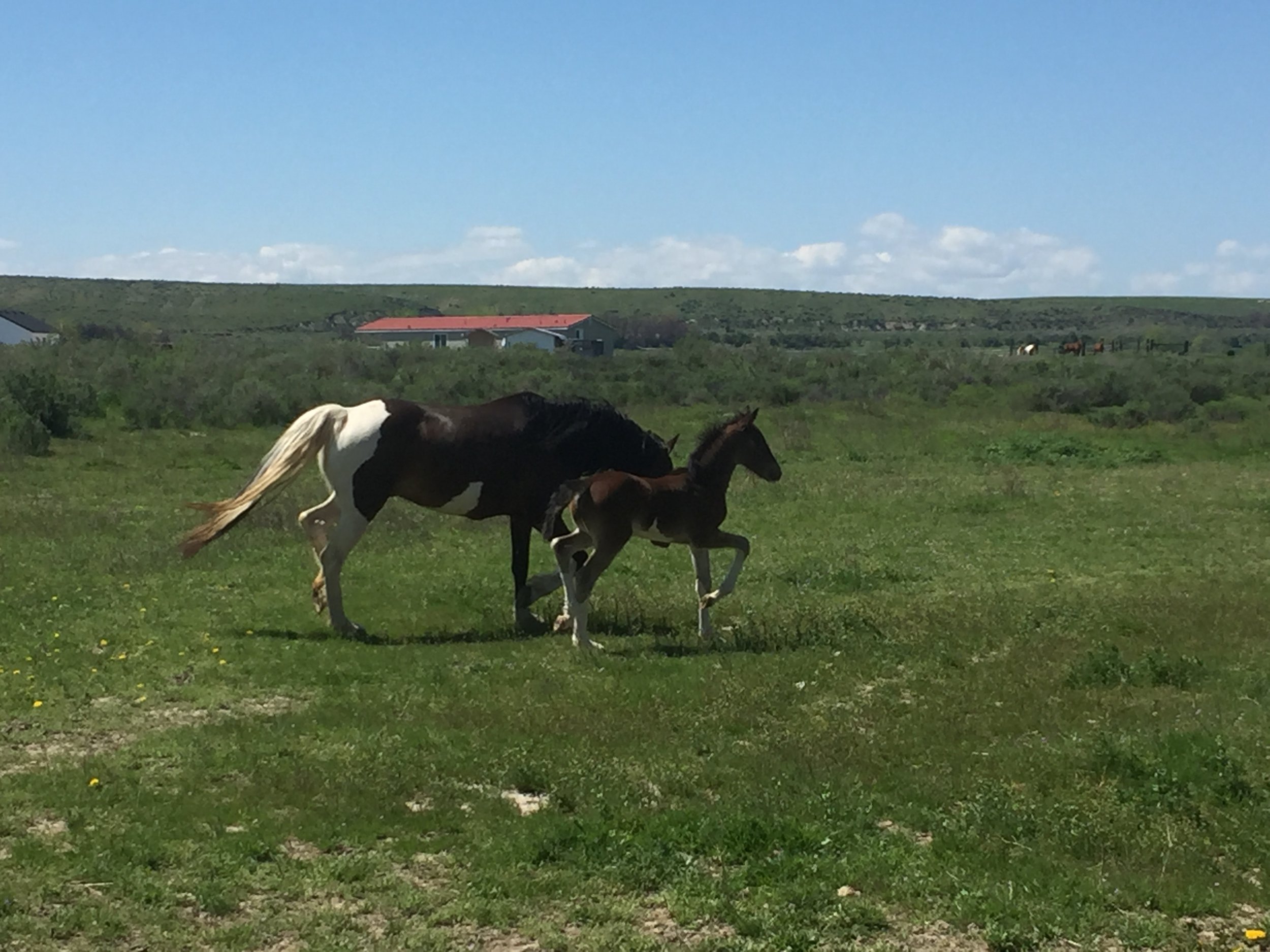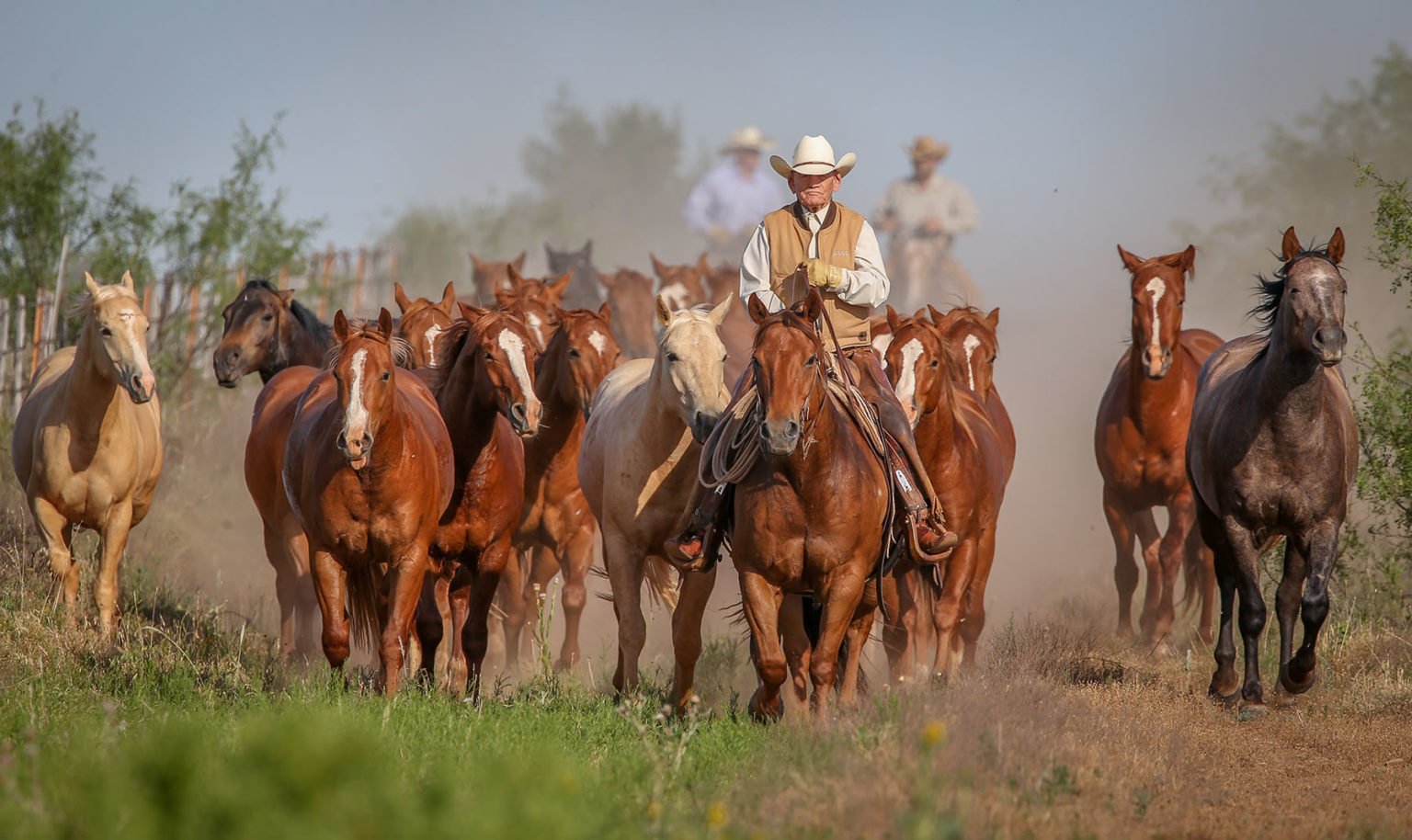How far should we go?
Not long ago I took a horse for a pre-purchase exam for a potential buyer. The horse was very thoughtfully bred, wasn’t started until three years old when she received three months of education. She was walk, trot, canter and had 6 months of riding total before her PPE. During her examination, everything was going swimmingly until she was fussy about lifting a hind leg. The vet rightfully wanted to see X-rays of the stifles even though she showed no heat, effusion, or lameness of any kind. A small lesion was discovered in her stifle. The rest of the story for her future is not something we can foretell. Sometimes horses do okay with small OCD lesions in light work (probably because nobody looks for them.) Sometimes they don’t do well at all. There are effective surgeries and treatments available for these lesions which is good news. But there are a lot of questions that arise in my mind both as a breeder and as a trainer.
As a breeder, I am as careful as possible about my choice of matings. I know both parents and both are proven through performance or the show ring. They are sound, trainable, athletic, and have solid dispositions. I am conscientious about pedigrees and any traits specific bloodlines carried (these were the days before the widespread availability of genetic testing.) The vet who was performing the PPE observed that as we keep breeding “pedigreed” horses, anomalies that are recessive become more and more likely to arise. It’s the nature of the DNA beast. This is problematic at best on so many levels.
With young horses that I have bred, they live in the pasture coming into the stable for one month of education as a yearling, and one month as a two-year-old. As a three-year-old they are started under saddle. I educate them with the least amount of physical stress possible. Even with these policies in place, genetic anomalies can arise like lesions in the joints. One lovely gelding we had came up sore at 7 and X-rays showed a dime-sized hole in his navicular bone. Another had a lesion in the vertebrae of the neck and became progressively neurologic until he had to be euthanized. Genetic factors seem to be the strongest determinant in lesions along with diet (especially feeding for rapid growth) and environment. A vet I respect told me that the desired movement of some lines of western pleasure horses can be a direct result of neurological issues. Another vet had a similar observation with some warmbloods.
I have a colleague whose purebred Hannoverian mare was diagnosed with OCD lesions in both stifles in her teen years. She didn’t show previous clear lameness and had been extremely well cared for and seen by multiple veterinarians. Another colleague had multiple stifle problems in her Morgan horse. It’s obvious this is seen in disparate breeds of horses.
Again, as a breeder, it seems that nutrition, environment, and appropriate workload for the age of the horse are the only things under my control. I’ve done the best I can do in these areas here on the farm. Some questions arise, however. Do feral horses foraging on whatever is available to them in their environment come up with OCD lesions? Why or why not? Their diet is not being supplemented and their activity remains unmonitored. Could it be that weakness that leads to unsoundness is simply bred out by predation?
What about large ranch remudas where mares run and foal over miles of the countryside before being gathered and the babies weaned. Again, the diet is not fortified and the foals/young horses choose their activity levels. They’re often turned out after weaning until 2 when they’re brought in to start under saddle. I know these examples are not the case in most domestic breeding practices. Most matings are chosen by color, size, and specific athletic ability. Are we experiencing unintended consequences including the prevalence of predisposition to lameness because we are able to treat the lameness so well that the horse can still perform to a very high level? I’m not sure. But it’s worth talking about openly.
The legendary remuda of the 6666 Ranch
Should it be common breeding practice to do a full panel of X-rays on mares and stallions before breeding? Would that make a difference if both the stallion and the mare stayed sound (without injections etc) throughout their career? Is a performance career an excuse to use and abuse the joints of a horse to the point where it is unknown if the damage to the joints is from work or genetics? These are valid questions as we are creating beings that should, by and large, exist in this world for 20+ years. Yet the breeding community remains silent. Lameness tendencies among big-dollar stallions are kept hush-hush to protect the owner’s financial investment. Is this ethical to a mare owner who believes they are creating a (most likely) sound equine athlete only to discover it may need surgery to reach its potential? I know I don't want surgery and I’m pretty sure horses don’t either. They don’t have a say in the pain, disorientation, lack of understanding, and the entire recovery process.
As a trainer, I begin to question each behavior of horses especially since I work with a lot of troubled horses. Is the horse that resists picking up a hind leg simply annoyed or afraid or does he need stifle X-rays? Does the horse who struggles with a specific lead have some joint lesion somewhere causing him pain? Is the horse who is very crooked simply need targeted exercises to balance him or are there more nefarious issues at play? How am I to tell if a horse is out of balance, lacking in strength, education, or flexibility, or if the horse needs a full panel of X-rays? Bodywork can help but is that going to cover up a deeper issue (if there is one?) Are joint injections alleviating inflammation or could they be kicking the can down the road for more serious soundness issues?
As both a trainer and a breeder, I would love more guidance in these areas because I keep asking myself, “How far should I go?”

